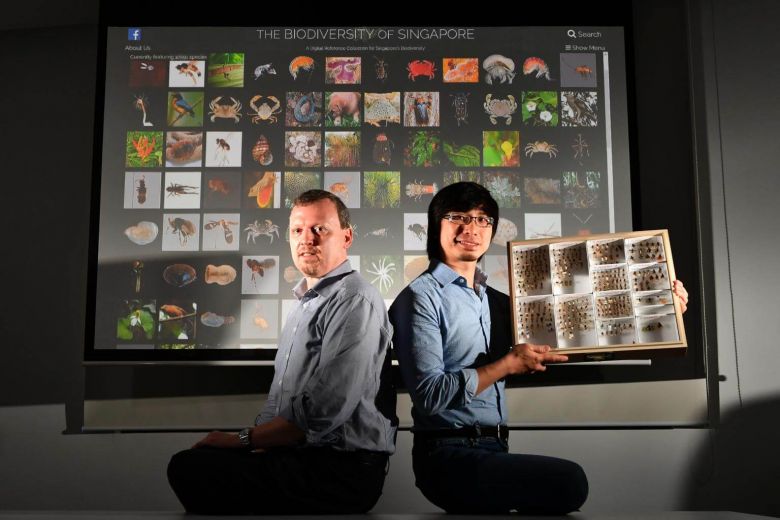Tackling 90% of the Animal Species Diversity
Tackling 90% of the Animal Species Diversity
BIODIVERSITY OF SINGAPORE ONLINE

Environmental biology has traditionally largely ignored >90% of the animal species diversity because it is too difficult to handle (too many species, high abundances, small body sizes). Yet, collectively these species constitute much of the animal biomass and are critical for many ecosystem processes. This is often overlooked because it is not intuitive that many-small-animals can be as important (or even more important) than large animals that are regularly seen. Yet, all the spiders of the world combined eat more meat than humans and would run out of food within a year if they were to eat humans. Similarly, more than 2/3rd of Homo sapiens’ leading food crops depend on insect pollinators that were widely ignored until they started to disappear.
We are thus currently developing NGS techniques for tackling “the other 99%”; i.e., species- and specimen-rich taxa. Emphasis is on creating simple workflows that have the potential for widespread use and automation. In fact, our methods are now sufficiently user-friendly that they can be used in undergraduate modules, UROPS, and FYP projects.
We recently published some of the methods and applications. We first introduced and tested cost-effective “NGS barcoding” (Wang et al., 2018) and then illustrated how it can be used to find the unknown larval habitats of even rare dragon- and damselflies (Yeo et al., 2018). We also applied some of the techniques to Singapore’s most important swamp forest remnant (Kutty et al., 2018). Many of the recently discovered Singaporean species (>7,500) are now featured on the “Biodiversity of Singapore” website (https://singapore.biodiversity.online/).
One obstacle to widespread use of the techniques is the reliance on expensive lab equipment (including Illumina sequencers). This is why we recently developed a bioinformatics pipeline for MinION. This sequencer weighs <100 g, plugs into a USB port, and costs <USD 1000. However, the data are still error-prone and we had to develop a new bioinformatics pipeline in order to generate accurate DNA barcodes (Srivathsan et al., 2018).
- Wang, W.Y., Srivathsan, A., Foo, M., Yamane, S. and Meier, R., 2018. Sorting specimen-rich invertebrate samples with cost-effective NGS barcodes: validating a reverse workflow for specimen processing. Molecular Ecology Resources. https://doi.org/10.1111/1755-0998.12751
- Yeo, D., Puniamoorthy, J., Ngiam, R.W.J. and Meier, R., 2018. Towards holomorphology in entomology: rapid and cost-effective adult-larva matching using NGS barcodes. Systematic Entomology. https://doi.org/10.1111/syen.12296
- Kutty, S.N., Wang, W., Ang, Y., Tay, Y.C., Ho, J.K.I. and Meier, R., 2018. Next-generation identification tools for Nee Soon freshwater swamp forest, Singapore. Gard. Bull. Singapore, 70 (Suppl 1), pp.155-173.
- Srivathsan, A., Baloğlu, B., Wang, W., Tan, W.X., Bertrand, D., Ng, A.H.Q., Boey, E.J.H., Koh, J.J.Y., Nagarajan, N. and Meier, R., 2018. A MinION-based pipeline for fast and cost-effective DNA barcoding. Molecular Ecology Resources. https://doi.org/10.1111/1755-0998.12890
